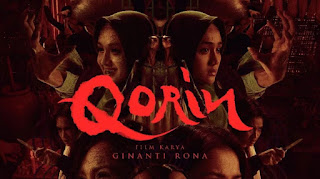Junji Ito's: Nagai Yume (2000) - Asian Horror Movie Review
Chances are, you’re familiar (at least in passing) with Master of Horror Junji Ito. As a highly-acclaimed, prolific manga-ka, Ito carved his throne of nightmares with grotesque and surreal genre-pushing imagery and storylines.
Often blending horror and sci-fi, the beauty of Ito’s terror is the fact his works depict scenes that are beyond the day-to-day imagination and comprehension of us mere mortals.
How then, do you take the monstrous, otherworldly works of Ito off the page and onto the screen? Generally, with great difficulty.
Enter Higuchinsky’s Made For T.V. movie Nagai Yume, (2000) better known in the west as The Long Dream.
While there are certain Junji Ito stories that lend themselves to cinematic adaptation - Tomie, for example, centring round an attractive “human” girl with a straightforward plot and a less intrusive level of body horror - The Long Dream affords its creators no such luxury.
Set in the ghoulishly green tinged Akatsuki hospital, patient Tetsuro Mukoda is hoping renowned Doctor Kuroda and Kuroda’s assistant Yamauchi can cure him of his bizarre neurological disorder.
Mukoda seems to be experiencing a strange form of time-warp while he sleeps. Each time this tired young man nods off his dreams last longer and longer and longer. What appears externally to be a regular night’s sleep for Kuroda is in fact lasting for a far more expansive amount of time internally. This man’s “long” dreams are now affecting his ability to function day-to-day (what was only yesterday now feels like a year ago).
Not only that, but Mukoda’s nocturnal time-travels are rapidly, and disturbingly, altering his outward appearance. This once handsome youngster now resembles a “Shinigami”. Death, grim reaper, God of Death - however it translates for you, it’s not a compliment.
What starts off as Cesare-From-Caligari-esque bags under Mukoda’s eyes all too quickly lead to a transformation not dissimilar to Jeff Goldblum’s in The Fly. Not as visceral, but no less dramatic. (Kudos to the art department here, they had some task on their hands to get across Kuroda’s gruesome change without it looking silly.)
His frightful visage has not gone unnoticed by other sick denizens on his ward. Sweet, young Mami Takeyama has received a series of unwanted nightly visits from her sleepy neighbour, leaving her a terrified, nervous wreck. Watch in disgust as their two tragic fates intertwine.
What, oh what, are Doctors Kuroda and Yamauchi to do!? I sure hope they have the best intentions for their charges and are in no way a secret evil villain with a dark past hoping to utilise the uncharted scientific phenomena happening around them for their own selfish gains. WINK.
Higuchinksy’s 58 minute reimagining faithfully follows Ito’s original plot, *dramatic pause* until it doesn’t. It expands upon the core concepts and adds its own blood-drenched melodrama on top of that. Adding non-author content to pad out screen time could be an unmitigated disaster, but here it works so well that when the movie ended I actually preferred this version to the manga.
Due to the scientific and conceptually ambitious nature of the plot, the story is literally TOLD and not SHOWN, narrated for the viewer in an almost documentary style - which can be boring at times. The film also chops and changes character perspective, meaning it can be hard to keep up initially.That being said, there’s some excellent camera work going on here, chilling use of night vision, squeamishly good visual effects, stop-motion animation, striking gore shots of contrasting colours, shocking plot twists and the most atmospheric use of lighting I’ve ever seen used to represent that a character is positively evil.
It also confronts viewers with themes of grief, suicide, mortality, redemption and poetic justice - with a warning not to “[trespass] into forbidden territory.”
Despite the plodding pace at the start, the cheesy (but no less eerie) make-up and the pantomime villain acting, Nagai Yume/The Long Dream is a solid on-screen representation of Ito’s work. At just under an hour it does not overstay its welcome, will give you a good laugh, possibly a scare, and at the very least is a J-Horror curiosity that goes well as a double-bill with Higuchinksy’s other Ito movie adaptation… Uzumaki.Both Nagai Yume and Uzumaki have poor quality subbed versions up on YouTube, that’s where I watched both. Why don’t you give them a watch too and tell me whether or not you think the horror of Junji Ito is transferable to the big screen (or small, depending on your device) or whether his menace should stay confined within the borders of a manga?
That’s all from me, sweet… dreams. (I hope they’re short.)
Let's keep our spooky debate going on:
INSTA: @senseisensibility










Comments
Post a Comment